Дэниел Ергин - В поисках энергии. Ресурсные войны, новые технологии и будущее энергетики
- Название:В поисках энергии. Ресурсные войны, новые технологии и будущее энергетики
- Автор:
- Жанр:
- Издательство:Array Литагент «Альпина»
- Год:2013
- Город:Москва
- ISBN:978-5-9614-3343-2
- Рейтинг:
- Избранное:Добавить в избранное
-
Отзывы:
-
Ваша оценка:
Дэниел Ергин - В поисках энергии. Ресурсные войны, новые технологии и будущее энергетики краткое содержание
В поисках энергии. Ресурсные войны, новые технологии и будущее энергетики - читать онлайн бесплатно ознакомительный отрывок
Интервал:
Закладка:
10. Stephen E. Ambrose, Eisenhower: Soldier and Statesman (New York: Simon & Schuster, 1990), pp. 13–39; David Eisenhower, Eisenhower at War: 1943–1954 (New York: Random House, 1986), pp. 241–53; Sverre Petterssen, Weathering the Storm: Sverre Petterssen, the D – Day Forecast, and the Rise of Modern Meteorology, ed. James Rodger Fleming (Boston: American Meteorological Society, 2001), chs. 16–19; The New York Times, June 6, 1964.
11. Roger R. Revelle, “Sun, Sea and Air: IGY Studies of the Heat and Water Budget of the Earth,” Geophysics and the IGY, Geophysical Monograph, no. 2. American Geophysical Union, July 1958, pp. 147–53 (“dark age”); Ronald Fraser, Once Around the Sun: The Story of the International Geophysical Year (New York: Macmillan Company, 1958), p. 37 (“ man-made”).
12. Hart and Victor, “Scientific Elites,” p. 651 (“adequately documented”); Arrhenius Oral History (“historic event”).
13. Charles David Keeling, “Rewards and Penalties of Monitoring the Earth,” Annual Review of Energy and the Environment 23 (1998), pp. 25–82.
14. Keeling, “Rewards and Penalties of Monitoring the Earth,” p. 30.
15. Revelle Oral History (“never been interested”); Keeling, “Rewards and Penalties of Monitoring the Earth,” pp. 78–79 (“keen interest”).
16. Spencer Weart, The Discovery of Global Warming (Cambridge: Harvard University Press, 2003), pp. 128–29.
17. Revelle Oral History (“most beautiful”); Arrhenius Oral History (“I’m sorry”).
18. Keeling, “Rewards and Penalties of Monitoring the Earth,” p. 48 (“present trends”); Weart, The Discovery of Global Warming, p. 38 (“central icon”).
19. Alan D. Hecht and Dennis Tirpak, “Framework Agreement on Climate Change: A Scientific and Policy History,” Climactic Change 29 (1995), p. 375.
20. The White House, Restoring the Quality of Our Environment: Report of the Environmental Pollution Panel, November 1965, pp. 126–27 (“almost certainly”); Hubert Heffner to Dr. Daniel P. Moynihan, January 26, 1970, Moynihan Papers, Nixon Library; Steven R. Weisman, Daniel Patrick Moynihan: Portrait in Letters of an American Visionary (New York: Public Affairs, 2010), p. 202 (“get involved”).
21. Betty Friedan, “The Coming Ice Age,” Harper’s, September 1958; G. J. Kukla and R. K. Matthews, “When Will the Present Interglacial Period End?” Science 178, no. 4057 (1972), pp. 190–91 (“global cooling”); Hecht and Tirpak, “Framework Agreement on Climate Change,” p. 376 (Defense Department climate analysis); S. I. Rasool and S. H. Schneider, “Atmospheric Carbon Dioxide and Aerosols: Effects of Large Increases on Global Climate,” Science 173, no. 3992 (1971), pp. 138–41 (“trigger an ice age”); James Fleming, Historical Perspectives on Climate Change (New York: Oxford University Press, 1998), p. 132 (U. S. National Science Board report); Wallace Broecker, “Climate Change: Are We on the Brink of a Pronounced Global Warming?” Science 189, no. 4201 (1975), pp 460–63 (“discount the warming effect”).
22. Hecht and Tirpak, “Framework Agreement on Climate Change,” p. 377 (“propelling concern”) Thomas Peterson, William Connolley, and John Fleck disagree, strongly arguing that it is a “popular myth” and a “falsehood” to say that “in the 1970s the climate science community was predicting ‘global cooling.’ “The Myth of the 1970s Global Cooling Scientific Consensus,” Thomas C. Peterson, William M. Connolley, John Fleck, “The Myth of the 1970s Global Cooling Scientific Consensus,” Bulletin of the American Meteorological Society, Volume 89, Issue 9, pp. 1325–37. Они пришли к такому выводу на основе анализа публикаций, включая цитаты из различных статей, за период с 1965 по 1979 г. Вину за «миф» они возложили в определенной мере на «средства массовой информации». Вместе с тем, как свидетельствует ответ Мойнихану, между учеными в те годы существовал ясный раскол. Как заметил отец моделирования климата Сюкуро Манабе, «в то время глобальное потепление никого не волновало… Некоторые считали, что надвигается новый ледниковый период». Однако к концу 1970-х гг. акцент сместился с похолодания на потепление, если не считать, конечно, «ядерной зимы». Короче говоря, все это десятилетие характеризовалось отсутствием «согласия».
23. Newsweek, April 28, 1975; “What Is Happening to Our Climate,” National Geographic, November 1976, Time magazine, August 19, 1976.
24. R. P. Turco, O. B. Toon, T. P. Ackerman, J. B. Pollack, and Carl Sagan, “Nuclear Winter: Global Consequences of Multiple Nuclear Explosions,” Science 222, no. 4630 (1983), pp. 1283–92.
25. Hart and Victor, “Scientific Elites,” pp. 657–61 (“advertant”); Weart, The Discovery of Global Warming, p. 5 (Kennedy); Martin Campbell-Kelly and William Aspray, Computer: A History of the Information Machine (Boulder, CO: Westview Press, 2004), p. 79 (“considerable temerity”).
26. Norman Macrae, John von Neumann: The Scientific Genius Who Pioneered the Modern Computer, Game Theory, Nuclear Deterrence, and Much More (American Mathematical Society, 2008), pp. 5, 248 (“last words”).
27. Macrae, John von Neumann, pp. 52, 250, 266, 325, 369; Stanislaw M. Ulam, Adventures of a Mathematician (Berkeley: University of California Press, 1991), pp. 4, 203, 245.
28. Campbell-Kelly and Aspray, Computer, pp. 3–4 (“computers”); Macrae, John von Neumann, p. 234 (“modern mathematical modeling”).
29. Macrae, John von Neumann, pp. 298, 302 (“phenomena”).
30. Spencer Weart, “Government: The View from Washington, DC,” The Discovery of Global Warming, at http://www.aip.org/history/climate/Govt.htm(“warfare”); Macrae, John von Neumann, pp. 298, 316 (“jiggle,” “weather predictions”); New York Times, February 9, 1957 (“electronic brain”).
31. 31. Norman Phillips, “Jule Charney, 1917–1981,” Annals of the History of Computing 3, no. 4 (1981), pp. 318–19; Norman Phillips, “Jule Charney’s Influence on Meteorology,” Bulletin of the American Meteorological Society 63, no. 5 (1982), pp. 492–98; John M. Lewis, “Smagorinsky’s GFDL: Building the Team,” Bulletin of the American Meteorological Society 89, no. 9 (2008), pp. 1339–53; Macrae, John von Neumann, pp. 316–20.
32. 32. “‘Suki’ Manabe: Pioneer of Climate Modeling,” IPRC Climate 5, no. 2 (2005), pp. 11–15; Syukuro Manabe and Richard Wetherald, “Thermal Equilibrium of the Atmosphere witha Given Distribution of Relative Humidity,” Journal of Atmospheric Sciences 24, no. 3 (1967), pp. 241–59; Spencer Weart, “General Circulation Models of Climate,” The Discovery of Global Warming , at http://www.aip.org/history/climate/GCM.htm.
33. 33. Interview with Fred Krupp.
34. 34. Macrae, John von Neumann, p. 3245–326 (most prominent meteorologist); James G. Speth, Red Sky at Morning: America and the Crisis of the Global Environment (New Haven: Yale University Press, 2005), p. 3; interview with Rafe Pomerance; Report of an Ad Hoc Study Group on Carbon Dioxide and Climate, Woods Hole, Massachusetts, July 23–27, 1979, to the Climate Research Board, Assembly of Mathematical and Physical Sciences, National Research Council (Washington, D. C.: National Academy of Sciences, 1979) (“incontrovertible evidence”).
35. 35. “Effects of Carbon Dioxide Buildup in the Atmosphere,” Hearing, U. S. Senate Committee on Energy and Natural Resources, April 3, 1980.
36. 36. George M. Woodwell, Gordon J. MacDonald, Roger Revelle, and Charles Keeling, “The Carbon Dioxide Report,” Bulletin of the Atomic Scientists 35, no. 8 (1979), pp. 56–57.
37. 37. Speth, Red Sky at Morning, pp. 2–9.
38. 38. Jonathan Overpeck, “Arctic Environmental Change of the Last Four Centuries,” Science 278, no. 5341 (1997).
39. 39. Walter Munk, “Tribute to Roger Revelle and His Contributions to Studies of Carbon Dioxide and Climate Change,” Colloquium on Carbon Dioxide and Climate Change, National Academy of Sciences, Irvine, CA, November 13–15, 1995 (“exile”); Revelle Oral History.
40. 40. Roger R. Revelle, Lecture Notes, Mc6 Box 55, Folder “Natural Sciences 118,” Scripps Institution of Oceanography Archives.
41. 41. Al Gore, An Inconvenient Truth (New York: Rodale Books, 2006), p. 10; Al Gore, Earth in the Balance: Ecology and the Human Spirit (New York: Rodale Books, 2006), p. 5 (“rest of my life”); Hecht and Tirpak, “Framework Agreement on Climate Change,” p. 381 (“deeply disturbed”).
Глава 22. Дорога до Рио
1. Mathew Paterson, Global Warming and Global Politics (London: Routledge, 1996), p. 32; interview with Robert Stavins, New York Times, June 26, 1988 (“For the Midwest”).
2. Interviews with Tim Wirth and David Harwood; Tim Wirth interview, Frontline, PBS.
3. The New York Times, June 23, 1988; James Hansen interview, Frontline, PBS; James Hansen, testimony, U. S. Senate Energy and Natural Resources Committee, June 23, 1988.
4. “‘Suki’ Manabe: Pioneer of Climate Modeling,” IPRC Climate 5, no. 2 (2005), p. 14 (“They weren’t too impressed”); interview with Tim Wirth (“huge event”); New York Times, August 23, 1988 (“almost overnight”).
5. Roger R. Revelle to Mancur Olson, September 2, 1988, Mc A6, Box 19, Folder “Correspondence August 1988,” Revelle papers.
6. Spencer Weart, The Discovery of Global Warming (Cambridge: Harvard University Press, 2003), p. 151 (Villach); Mohamed T. El-Ashry, “Climate Change, Clean Energy, and U. S. Leadership,” AAAS Science and Technology Policy Fellows Programs, 30th Anniversary Symposium, May 13, 2004.
7. Richard Elliott Benedick, Ozone Diplomacy: New Directions in Safeguarding the Planet (Cambridge: Harvard University Press, 1998).
8. Richard Kerr, “Hansen vs. the World on the Greenhouse Threat,” Science 244, no. 4908 (1989), pp. 1041–43.
9. Tim Wirth to Roger R. Revelle, July 15, 1988, Roger R. Revelle to Tim Wirth, July 18, 1988, Roger R. Revelle to Jim Bates, July 14, 1988, Mc A6, Box 19, Folder “Correspondence July 1988,” Revelle papers.
10. James E. Hansen, Wei-Chyung, and Andrew A. Lacis, “Mount Agung Eruption Provides a Test of Global Climactic Perturbation,” Science 199, no. 4333 (1978), pp. 1065–68 (“simultaneous studies”); Audubon, November – December 1999 (“captivated,” “best proof”); James Hansen, “Climate Threat to the Planet: Implications for Energy Policy and Intergenerational Justice,” Jacob Bjerknes Lecture, American Geophysical Union, December 17, 2008 (“Venus Syndrome”).
11. Andrew Revkin, “Endless Summer: Living with the Greenhouse Effect,” Discover, October 1988.
Читать дальшеИнтервал:
Закладка:
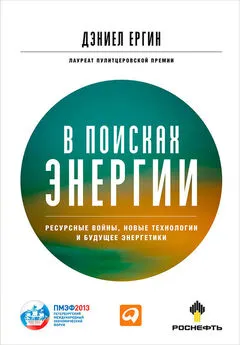

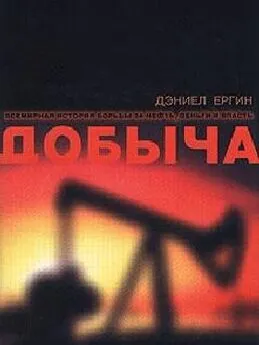
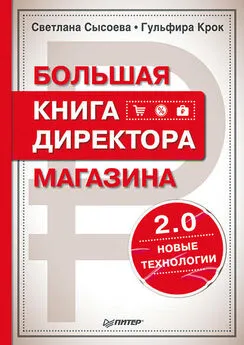
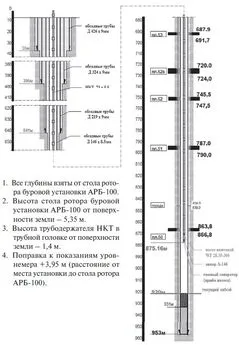
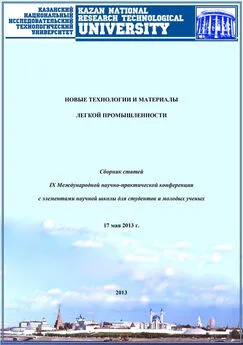


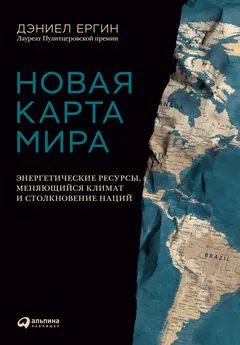
![Андрей Степанов - В поисках энергии [фрагмент]](/books/1060562/andrej-stepanov-v-poiskah-energii-fragment.webp)
